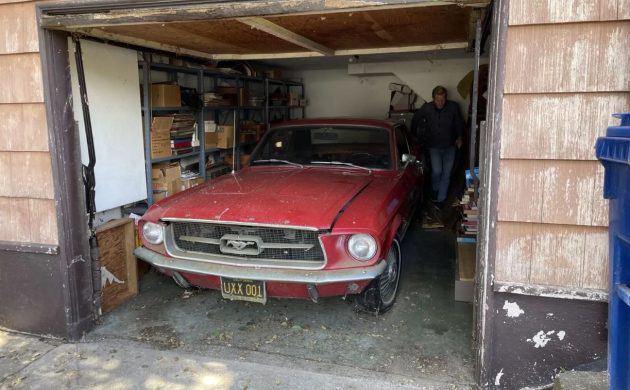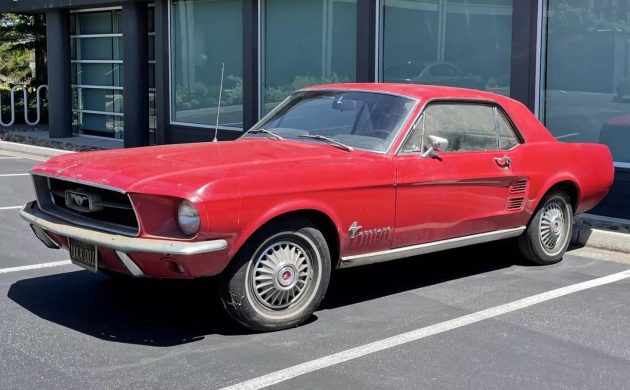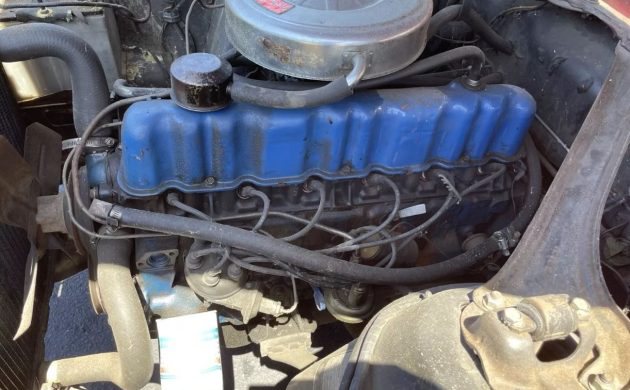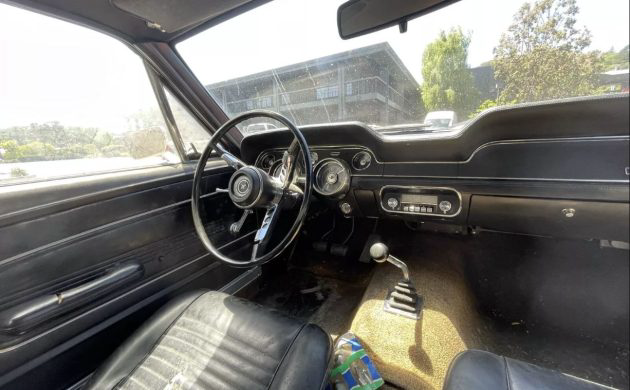One of the battles when assessing an older classic project candidate to park in your garage is finding one where rust hasn’t progressed to a point where it compromises financial viability. However, that isn’t an issue with this 1967 Ford Mustang. It recently emerged after four decades hibernating in a Californian garage. The dry and sheltered existence has left it rock-solid, making it an ideal project candidate. The seller purchased the car from an estate, planning its revival. Unfortunately, life has gotten in the way, and they admit they will never get to this classic. Therefore, they have listed the Mustang here on eBay in East Hampton, New York. Bidding currently sits above the reserve at $10,600.
Some paint shades seem inextricably linked with a specific car. Late 1970s Pontiac Trans Ams in Starlight Black are an example, while a First Generation Mustang in Candy Apple Red is another. Ford offered an enormous choice during its production life, but this was one of the most popular colors. The seller located this classic in a Californian garage, a spot it had occupied since 1984. They purchased it from the previous owner’s estate and trailered it home. A faithful restoration was the goal because the Mustang is unmolested and has a genuine 67,000 miles on the clock. It is easy to see why they chose that approach because while the car isn’t perfect, the underside shots confirm it is rock-solid and rust-free. The passenger-side rear quarter panel has a sizeable dent, and I’m unsure whether a shop could repair it satisfactorily. I would brace for a panel replacement but strive for a repair to preserve the bodyshell’s originality. Any further imperfections are minor, the glass looks okay, and the trim might respond well to a high-quality polish.
Lifting this Mustang’s hood reveals the T-Code 200ci six that produced 120hp and 190 ft/lbs of torque in its prime. A three-speed manual transmission fed those ponies to the road via the rear wheels. It wasn’t the most potent weapon on the planet, but I have always believed that cars like this were crucial when considering the badge’s success. There are faster and more desirable versions, including the GT, Mach 1, Boss, and any Shelby variant. However, these entry-level versions made the Mustang affordable and readily available to the masses. Without them, the Mustang’s sales volumes would have been considerably lower, which could have jeopardized the cost of developing ongoing replacements. The seller hasn’t attempted a revival, believing the car hasn’t fired a shot in forty years. The drivetrain components are robust, so coaxing it back to life may not be difficult. The winning bidder then faces the choice of pursuing a faithful restoration or slotting something more powerful into the engine bay.
This Mustang’s unmolested story continues with its interior, and there is plenty to like. The dash is a highlight, with its condition exceptional for a vehicle of this age. The gauges feature clear lenses, and there are no aftermarket additions. The interior isn’t perfect, but significantly improving its presentation shouldn’t be expensive. The driver’s seat base is split, the carpet is faded, and the armrests on both doors exhibit deterioration. Some smaller hard trim items are missing, but that appears to be all the winning bidder will place on their shopping list. The back seat is in good order, the headliner and door trims look acceptable for a driver-grade restoration, and there are no signs of broken or damaged plastic.
This 1967 Mustang shows promise as a project candidate, and its greatest attraction to many will be its rust-free status. That helps explain the twenty-five submitted bids, and there is time on this auction for that figure to climb. That begs the question of what path the new owner might pursue once it is in their garage. A faithful restoration would be the most straightforward and affordable, while many shops hold off-the-shelf components for slotting a V8 under the hood. That upgrade is common, but is it one you would choose?












A few days ago we saw a first generation Mustang which needed fairly extensive body work. Some saw it as a straightforward do-able project (which is fine), others (including me) suggested there are many, many driver-grade early Mustangs out there to choose from. So, consider looking around for a better one. Since then we have seen three such examples, including this one. Granted, it needs work (if it is in driver condition, don’t they all) and has the basic drivetrain. But it’s not expensive and looks decent, and it gets the owner into the hobby with a popular car.
Notchback body style, 6-cylinder, 3-speed, manual steering, manual brakes, and un-tinted glass make this among the most basic of Mustangs built for 1967. I see three options: AM radio, full wheel covers, and whitewall tires (or not, depending on how it was originally ordered). It is remarkable that such a stripper has survived intact all these years.
I grew up in the Bay Area, in the early-80’s cars like this were a dime a dozen. Me and a couple of friends knew approximately what time on Friday’s the local 7-11 would get fresh copies of that weeks Autotrader. We’d each get a copy and flip through the pages circling factory muscle cars or anything with a 4spd, everything else was ignored. With a little luck you could find and purchase an early Road Runner or late-60’s 442 or some other B level muscle car with original paint, low mileage and a 4spd within a few weeks of starting an active search for around $1,000. Even then LS6 Chevelle’s, anything with a Hemi, Boss Mustangs and other cars with equipped with the highest output engines were priced out of our reach, just like today.
No one would bother with a car that had rust, a friend I’ve known for around 25 years said if a car had rust around the rear wheel wells, he’d automatically part it out. He said he regrets it now, but back then good cars were so plentiful they were unsellable.
Steve R
Mid-seventies was even a better time for cheap muscle cars, especially after one of the oil embargos. I bought a one owner 68 Cougar XR-7 with an S-code 390 in 77 for all of $350. In 78 I bought a 69 GTO 3 speed for $550. Both cars were in beautiful shape for NY. Sold both for a profit and thought I was doing good; little did I know I should have kept them. Young, dumb and full of c*m!
When did the 250 come out? Was it the same block? I recall around 1980, Mustangs again had the inline 200, but not the 250.
Friend bought a nice looking ‘65. Sat in a garage for over 25 years. He got it home and most of the seals were dried out. Leaked like a sieve!
This type of ’67 Mustang made quite the impression on 7 year old me, when my aunt bought one exactly like this car. Save for white paint. I fell in love with it, and couldn’t wait til Dad would bring it to the house for a tune up. Bone stock with a 6 and a stick. Put me on my Mustang journey.
Mid-seventies was even a better time for cheap muscle cars, especially after one of the oil embargos. I bought a one owner 68 Cougar XR-7 with an S-code 390 in 77 for all of $350. In 78 I bought a 69 GTO 3 speed for $550. Both cars were in beautiful shape for NY. Sold both for a profit and thought I was doing good; little did I know I should have kept them. Young, dumb and full of c*m!